Copenhagen Cowboy: The Meaning of Nicolas Winding Refn’s Series On Netflix
After the preview debut at the Venice festival in 2022, the new six-part TV series conceived and directed by the talented director Nicolas Winding Refn, former author of Pusher, Drive, Valhalla Rising, Only God Forgives, The Neon is finally available on Netflix Demon and the telefilm Too Old to Die Young. As we have already anticipated in our review, Copenhagen Cowboy is an authentic masterpiece, which establishes a new pinnacle in the artistic career of the Danish filmmaker. On an aesthetic level, the series is a riot of neon lights, surreal atmospheres, electronic music, bright colors and dense darkness, which alternates scenes of brutal violence with long, almost contemplative moments of silence.
Copenhagen Cowboy: The Meaning of The Series
It is an extremely radical product, which for Refn marks a return to the origins and the Pusher trilogy, also from a geographical point of view: as can be well understood from the title, Copenhagen Cowboy is a proudly Danish series, which renounces the well-known faces of Hollywood to propose an all-European cast. From a content point of view, however, in the criminal slums of Copenhagen – already the scene of the misadventures of Mads Mikkelsen’s Frank – now the more magical, esoteric and metaphysical soul of Refn’s cinema bursts in, which emerged forcefully in the second phase of the cinematographic life of the ‘author.
Throughout the series, noir meets mystery and the crime genre is imbued with symbolism, offering us a narrative that is as dilated and rarefied as it is full of meaning. The plot itself is very linear, but there are many metaphysical mysteries, archetypes and esoteric themes that crowd Miu’s journey. Without any claim to be exhaustive, let’s, therefore, begin to scratch the surface with this explanation of the meaning of Copenhagen Cowboy by Nicolas Winding Refn.
Miu and Rakel: The Two Faces of Femininity
Originally, Copenhagen Cowboy was to tell the adventures of a mysterious young man, intent on wandering the world of the Danish underworld and sowing death and revenge. However, during the writing process, Refn chose to change course and put a female character at the center of his story, declining the mythical theme of the hero’s journey from a completely new perspective. Compared to Jesse – the young and immaculate protagonist-victim of The Neon Demon, played by Elle Fanning – Angela Bundalovic’s Miu is a heroic figure in all respects, who goes on a long journey, faces various trials and fights against iniquity and the forces of darkness. Like any self-respecting hero or heroine, Miu too has a shadow, a dark twin: it is her nemesis, Rakel, with whom she clashes in a mystical final battle.
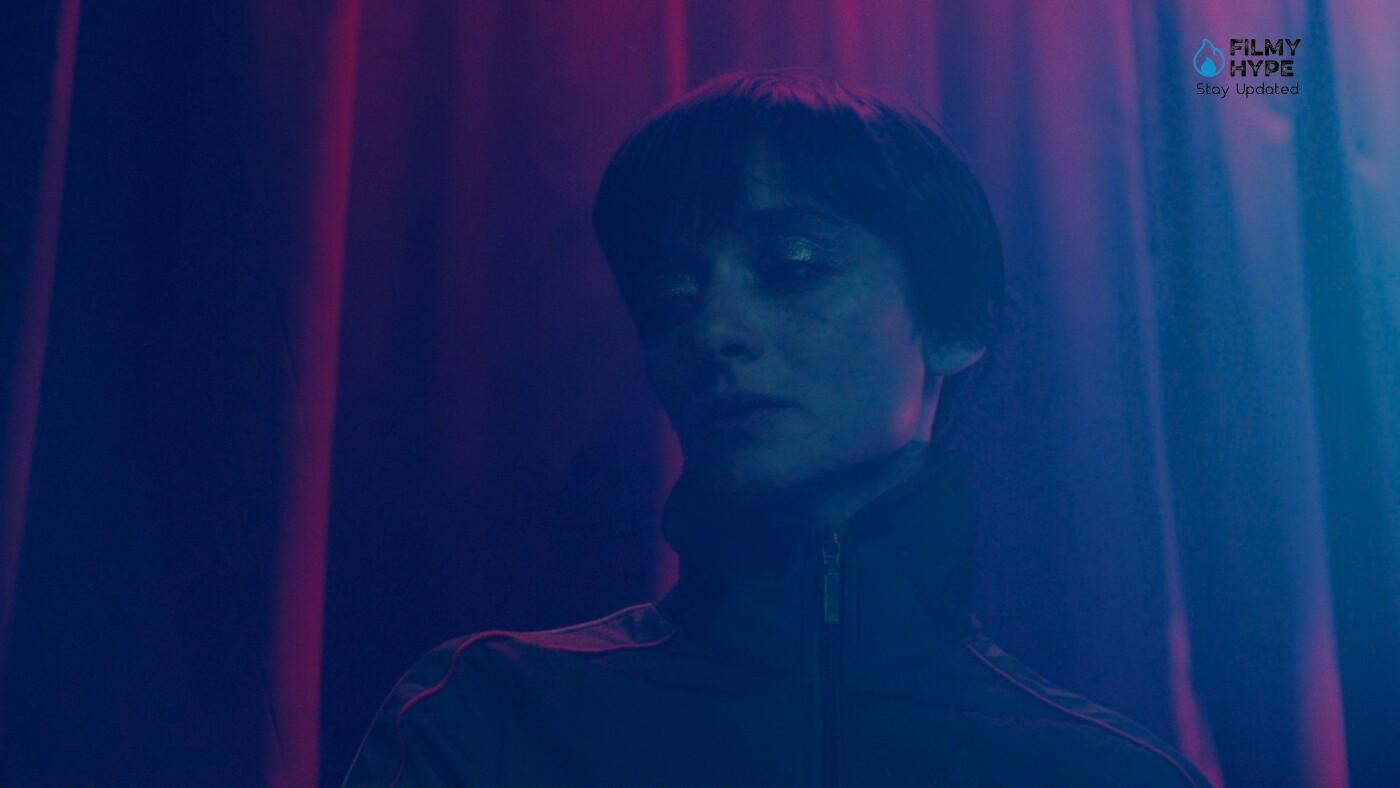
On a symbolic level, Miu and Rakel embody the two faces of femininity, summed up by the archetypes of the virgin and the witch, and by the colors blue and red. Miu is petite, sweet, and empathetic, while Rakel is fierce, aggressive, and menacing. The antithesis recalls the one that pitted Diana and Yaritza in Too Old to Die Young, but at the same time reflects different nuances. If the warrior-virgin Miu reminds us of the proud Artemis of the Greek world, or a saint of the Christian imagination, Rakel instead embodies the goddess Hecate, mistress of magic and the night, as well as the Judaic Lilith, who rebelled against the authority of her husband and to the first form of patriarchy. The origins of both women are shrouded in mystery: we sense that Rakel was killed by her family, devoted to the cult of masculinity, and immobilized like a vampire in a coffin, which lies in the cellar of the manor; Miu, on the other hand, has no family, and she is completely unaware of where she comes from.
The Hero’s Journey According to Refn
As stated by Refn himself in an interview, “the true DNA of Miu’s story is fairy tales and the hero’s journey”. To fully understand Copenhagen Cowboy, we must therefore deal with ancient mythology, and with a structure common to many stories that the scholar Joseph Campbell has effectively renamed “the hero’s journey”. It is a schematic reduction that he made to the school, and that inspired, among others, George Lucas, Zack Snyder and the Wachowski sisters. The path involves a traumatic departure from home, crossing a threshold of adventure, imprisonment in a dark realm (the “belly of the whale”), escape, a series of trials, meeting a father figure, the final duel against the Shadow, and the return home. Refn also draws heavily on this scheme but chooses to leave out the extremes. For the Danish director, only the journey counts, and it doesn’t matter at all about the destination or starting point.
Of course, we know that Miu was abducted from her home by aliens at seven years old, and she crossed the “adventure threshold” when she returned to earth with her miraculous powers of hers, but all of this remains confined in the mists of a remote past. Similarly, she is not given to know what happens after her final duel against Rakel, and neither did she come out victorious or defeated. Devoid of head and tail, Miu’s journey however strictly follows Campbell’s scheme: it begins with imprisonment in Rosella’s house and the brothel, continues with the escape and destruction by fire of her captor, continues with the various trials which will allow her to bring justice to Copenhagen, avenging Cimona’s death and freeing little Ay from Mr. Chiang, also passing through the meeting with Miroslav, her only “father figure” of reference.
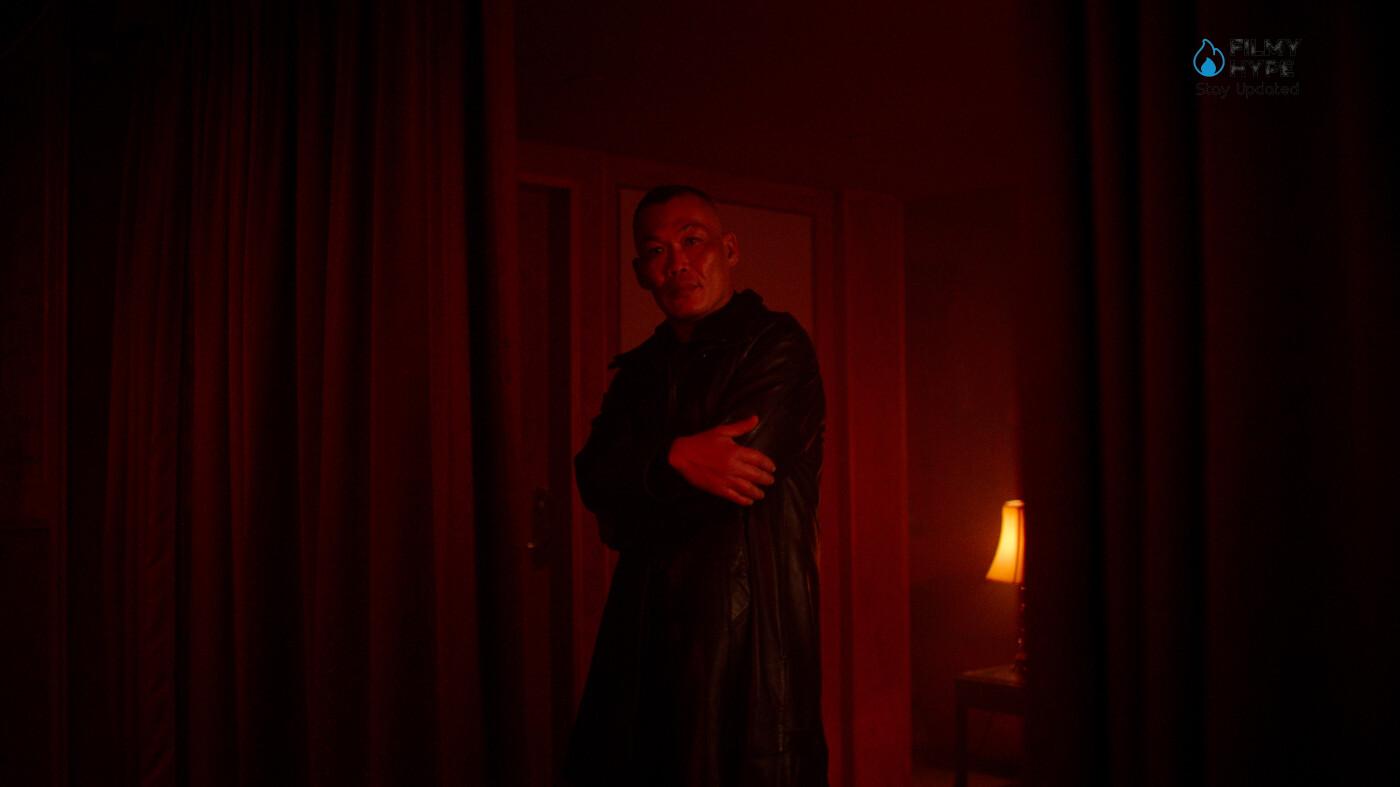
Somehow, however, before facing Rakel, Miu completes her hero’s journey with a kind of “coming home”. In the sixth and final episode (“The sky will fall”), after defeating Mr. Chiang, the protagonist suddenly finds herself wandering outside Copenhagen for the first time, amid the barren Danish nature. Here she meets other girls who wear the same iconic blue overalls that she has always uniquely identified with up to this moment. Who I am? What is happening? How do they know her? Why does one of them expressly tell her that “they have been waiting for her”? Rakel had anticipated it to us shortly before, in her dialogue with Nicklas: Miu “she is not just one, she is many”.
It is one of the most cryptic and mysterious sequences of the series, which allows us to move only in the terrain of hypotheses and interpretation. Perhaps they are other heroines who have made the same journey as Miu, supporting similar trials, and now find themselves reunited at the end of their journey, after having brought justice to the earth. If we want to indulge the bizarre mythology that connects the TV series to Too Old to Die, Young, it is possible that they too were sent into the world by aliens, and that they know each other because they shared the beginning of their journey. On a psychoanalytical level, however, they are only other faces of Miu herself, who finally reassembles her fragmented self (even in the credits, the girls are defined as alter egos of the protagonist!).
The Divine Comedy Lands in Copenhagen
The suggestive scenario that forms the backdrop to her encounter with the other heroines is completely devoid of artificial elements and immerses us in wild and uncontaminated nature. On a symbolic level, it is the last stage of a journey that began in Rosetta’s house and subsequently continued in the depths of dark Copenhagen, up to the vision of the white rose and the clash with Mr. Chiang. The house, the city, nature: throughout the three acts of Copenhagen Cowboy, the boundaries of the scenario gradually widen, in a path that from the initial prison leads first to a dark labyrinth, and finally to true freedom. As seen in The Neon Demon, Refn is certainly not new to Dante’s allusions, and in the first two episodes of Copenhagen Cowboy it is reiterated on several occasions that Rosetta’s house and the brothel are “hell”.
What if it wasn’t just a figure of speech? The first act, on closer inspection, makes us discover a dark prison world, an infernal kingdom governed by ignorant, corrupt, and violent tyrants. Continuing with this metaphor, the dark and tortuous Copenhagen, with its thousand missions to accomplish, would therefore represent a sort of purgatory, where the protagonist wanders tirelessly to atone for the faults of others (Mother Hulda) and where she meets the souls of, like Cimona, died prematurely. If this were the case, we could say that Miu is now in a sort of Paradise, together with the other pure souls who, like her, are worthy of transcending beyond the boundaries of the earthly world.
From Darkness to Light
Miu’s journey, just like Dante’s, is characterized by a radical transformation of language. At the beginning of Copenhagen Cowboy, everything is extremely concrete, brutal, and grotesque. There’s Sven, the man-pig who abuses prostitutes, there’s the Balkan clan that exploits the dreams of aspiring models to enslave them, and there’s Rosetta with her absurd superstition. Then, progressively, the tenor of the story becomes increasingly symbolic and less literal, and the atmosphere ever more mysterious and rarefied, finally reaching the enigmatic finale, with the sequence in the woods and the “neon” duel between Miu and Rachel. However, there are also some macroscopic differences between Dante’s journey and that of Copenhagen Cowboy.
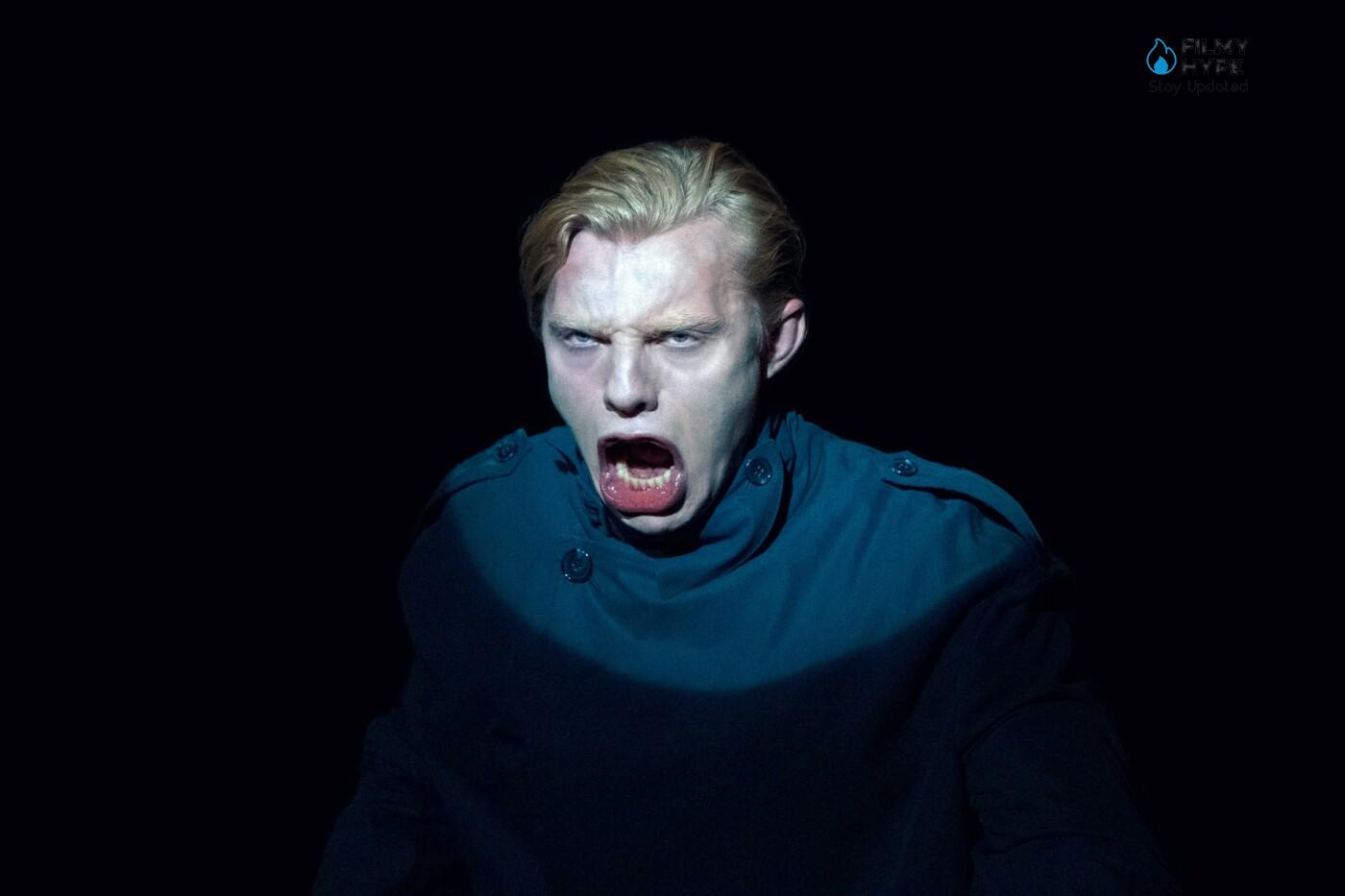
In her journey from hell to heaven, Miu is not a simple visitor, accompanied by an expert guide. On the contrary, the protagonist is completely alone, and she has to fight firsthand to escape from the traps of the various realms. Her journey is an authentic initiatory journey: as we learn from Miroslav, Miu is a real celestial creature, with supernatural powers, who finds herself imprisoned in a dark world. From Gnosticism (thought very dear also to Alejandro Jodorowsky, Refn’s friend and mentor) to alchemy, passing through Buddhism, the mythological and religious themes of the series are many, above all if we take into account the fact that, after returning to land, the protagonist has also lost her memory, completely forgetting her origins.
In short, Miu is a fallen angel, a creature of pure spirit – Hideo Kojima suggests this in his final cameo – who, after losing her memory, finds herself imprisoned in an earthly hell made of raw matter, violence, and brutality. Not surprisingly, the symbol of the flaming sword stands out on her overalls, which explicitly refers to biblical mythology and Eden.
The Pig Stable
So, let’s try to retrace some of the many symbols that crowd Copenhagen Cowboy, to understand something more. From the opening scene of the series, we can see how Refn puts the pigs at the center of attention. These animals and the stable that surrounds them are the leitmotifs of the first two episodes: it is not only Sven, Rosella’s perverse husband-drone, who emits pig noises but also Nicklas, the serial killer of prostitutes. The young person is the “final consumer”, the arrival point of an entire criminal industry based on sex, violence and prevarication.
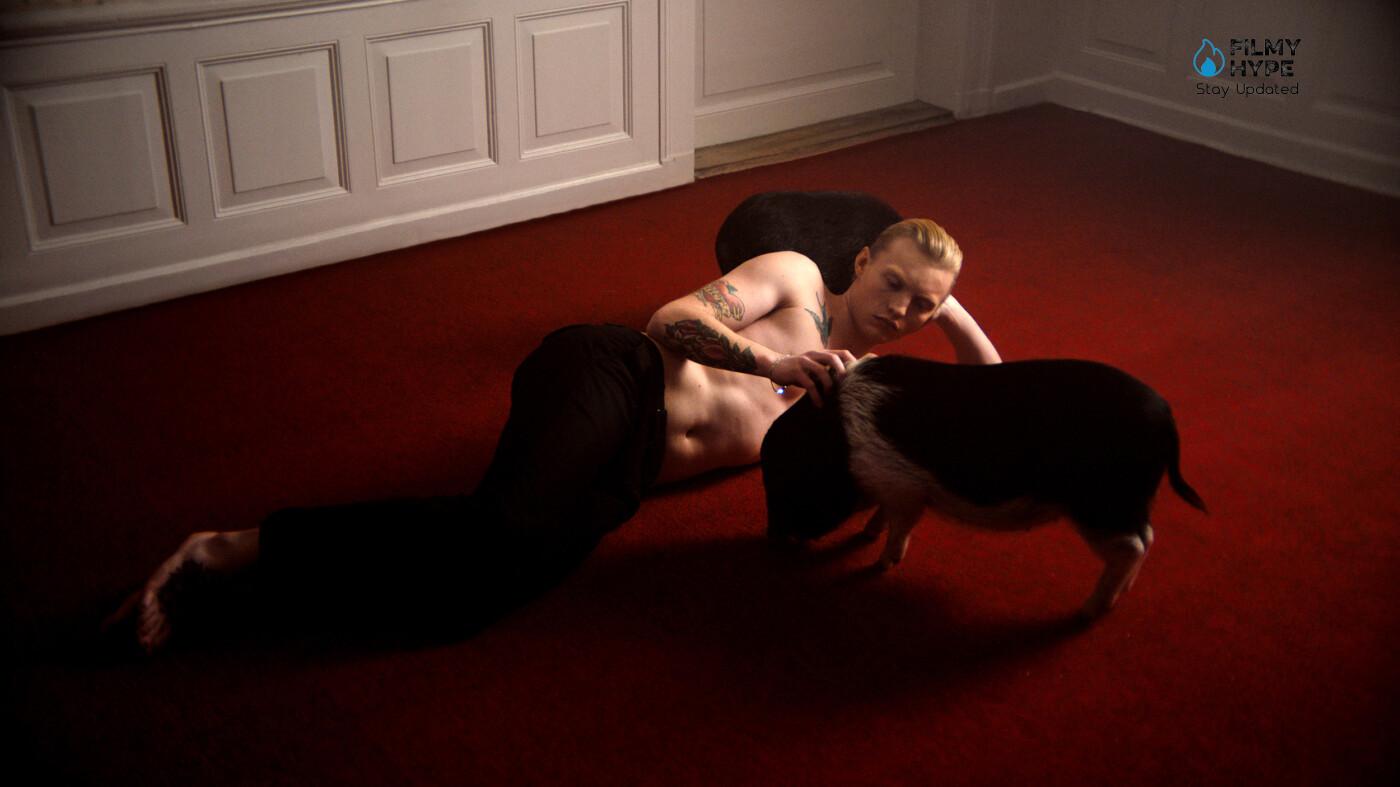
The analogy is quite clear and takes up the criticism that Refn had leveled at the most vulgar and degraded circles of the American police in Too Old to Die Young: by giving in to his basest instincts, man can be reduced to the rank of a mere animal. The last scene in which we meet the swine element is during the showdown between Miu and Nicklas: the young Dane has the worst, and his pigs pounce on him, devouring his body. Once again, it’s hard not to catch the echo of the Divine Comedy and the infernal retaliation: at the hands of the protagonist, Nicklas suffers a punishment that mirrors his disgusting conduct throughout his life.
The Cult of The Penis and The Castration Of Nicklas
In addition to being disfigured, Nicklas is also castrated by his pigs, and it is above all this that arouses the horror of his family. His father, Michael, has a real cult of the penis: he is genuinely obsessed with it and even considers it an “important cultural asset”, and “the protagonist of many artistic projects”. The whole family is a grotesque representation of patriarchal dynamics: Michael is its supreme leader and, just like the archetypal ancient warrior, divides his time between the domestic manor and his maritime exploits. Her wife, Beate, is completely submissive to both him and her son Nicklas, to the point of sacrificing her life for him, in a scene that presents an explicitly sexual and Oedipal metaphor.
She is happy to be a mere domestic servant, always excluded from male conversations, to whom Michael has entrusted the task of making sure that Nicklas’ semen is preserved. The insistence on the theme of the penis and castration, however, is not limited to representing an irreverent criticism of patriarchal culture but, on a spiritual level, it also represents a direct continuation of Alejandro Jodorowsky’s esoteric cinema.
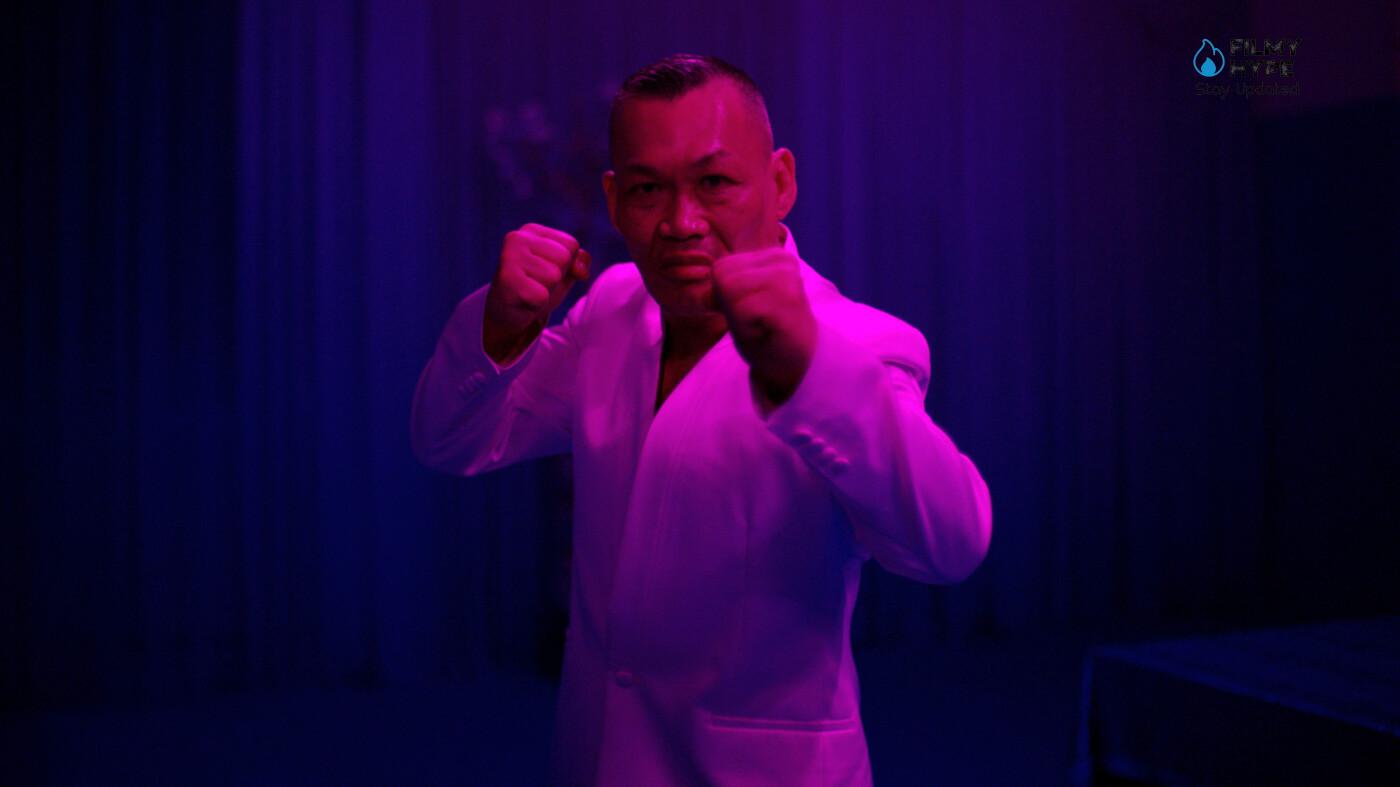
From El Topo to Santa Sangre, we find several times in the filmography of the Chilean director, a friend of Refn, the theme of castration (taken in turn from the Greek myth of Uranus), which always marks the end of the tyranny of sexual demons over the individual, and the advent of a new, fully spiritual phase. Similarly, the grotesque cult of the penis by the antagonists is also present in The Sacred Mountain, and should also have appeared in the Dune never made by Jodorowsky, where the phallic symbol should have stood out on all the armor of the evil Harkonnen family. In short, by castrating Nicklas, Miu opens a new phase of her initiatory journey, and breaks the confines of her imprisonment in the “pig barn”.
The Dragon
After freeing herself, Miu meets Mother Hulda: in the room, the camera’s attention lingers on the effigy of the dragon, painted with clear oriental features. The symbol is fundamental in the Copenhagen Cowboy imagery, and it is no coincidence that it stands out behind Miu even in what was the first promotional image of the series. Unlike what happens in the West, where the dragon is a dark and evil monster, in Eastern culture it is a celestial and spiritual entity, as opposed to the earthly tiger.
Accompanying her on various stages of her journey, the dragon represents Miu herself and her spiritual nature, which will lead her to look upwards to heaven. At the same time, however, Miu is not the only woman to conceal within herself an otherworldly and metaphysical power: the dragon – which is still also a symbol of strength, power, and aggressiveness – also stands out on Rakel’s red jumpsuit, instead of Miu’s flaming sword. In this case, the recurrence of the same symbol shows us how Miu and Rakel are yin and yang, two faces of the same energy and the same principle.
The Power of Blood
Despite violence being the star, in the six episodes of Copenhagen Cowboy blood rarely flows, and the fight scenes thus end up being extremely choreographed. On a narrative level, however, blood plays a highly symbolic role in both Miu’s and Rakel’s journeys. While dreaming of her during the night she spends in Mr. Chiang’s lair, Miu sees a white rose, a symbol of her spiritual purity, and pricks herself with a thorn. With a clear alchemical metaphor, his blood, which has evident curative powers, is kissed and drunk by Mr. Chiang, who thus wakes up cured once and for all of his ailments (started, after all, just when Mother Hulda – in his said – he stole “first his seed, and then his blood”).
In short, blood is the very essence of the protagonist, which transforms and is sublimed during her journey until it becomes a magical gift, a sort of thaumaturgical elixir. A similar elixir, but with far more obscure properties, is the blood of Beate, Nicklas’ mother, which is used to awaken Rakel from his coffin. By shedding his mother’s blood, Nicklas annihilates the submissive woman (Eva) and awakens the rebellious woman (Lilith), who had been sealed in the tomb by her mother, at the behest of her father. Taking up once again the filmography of Alejandro Jodorowsky (Santa Sangre), in Copenhagen Cowboy Refn makes blood an authentic magical substance, which transforms and revolutionizes reality and frees the ancestral forces contained in it.



